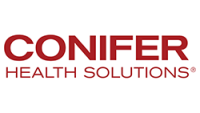Hospital margins have been hit hard over the past few years, with 75% of hospitals reporting an “adverse revenue cycle impact.”
Although patient volumes and other financial metrics have started to recover, hospitals still face “skyrocketing expenses and depressed margins” that offset many of those gains. Add to that an increase in self-pay, uninsured, bad debt and uncompensated care, along with continued labor challenges, and the situation has become dire for many organizations.
A June 2022 report notes that hospital margins are “cumulatively negative” as hospitals continue performing “below pre-pandemic levels.”
The road to post-pandemic financial recovery depends on a sound revenue cycle. Hospitals cannot afford outdated manual processes and workflow inefficiencies that lead to denied claims and delayed payment. Hospital revenue cycle leaders can address these issues with a sharper strategic focus in four key areas.
1. Submitting clean claims
In very few areas is the idea of GIGO (garbage in, garbage out) more of a problem than in claims processing workflows. Yet ensuring claims are correct and complete upon first submission is critical to the health of cash flow and the bottom line.
The top issues that lead to claim rejections and denials include:
- Missing or invalid claim dates
- Prior authorization and precertification issues
- Inaccurate eligibility or registration information
These three issues alone are responsible for more than half of all denials, and all are caused by inefficient workflows.
Providers can do several things to improve clean claim rates and reduce denials. The first is to leverage claim scrubbing tools that identify and flag potential issues before a claim reaches the payer’s adjudication system, thereby enabling staff to fix the issue before the claim has a chance to be rejected.
Prioritizing payer updates is also important. It can be challenging for staff to stay on top of continuous changes in payer requirements. Not doing so, however, can lead to denials such as unmet prior authorization or documentation requirements, missed timely filing deadline and more.
Another way to reduce rejected and denied claims is to ensure coding staff receive ongoing education on complete and accurate coding. They also should be made aware of how the quality of their work impacts the hospital’s bottom line. Using incentives for error-free work can help. It might also help reduce turnover.
Industry experts suggest providers should strive for clean claims rate of above 90%.
A note about encounter data: To advance healthcare’s transition to a value-based payment model and achieve optimal fiscal health, hospitals need to ensure that encounter data is accurate. Errors in encounter data, in addition to impacting reimbursement, lead to denied claims, delayed payments and increased stress for already overworked staff. The data should be tracked at the individual physician level, with scorecards issued to promote accountability.
2. Managing denials
Payers are denying more claims than ever — about one in every 10 claims submitted. The cost to health systems can be as high as 2% of net revenue.
This increase is the result of three actions by payers:
- Use of more sophisticated algorithms to perform automated reviews
- Use of more complex criteria for claims submission and medical necessity
- Inclusion of more variables in their contracts, such as medical necessity criteria and technical specifications
Providers should take a three-pronged approach to denials management: Prevention, recovery and escalation.
Prevention. To prevent denials, providers must understand why the claims have been denied — including at the payer level. By leveraging this information, providers can gain actionable insights to inform changes in how claims are formulated on the front end, thus preventing future denials.
Recovery. A solid recovery process facilitates faster, more accurate payment. Technology that leverages machine learning and advanced trending methodologies can automate the appeals process. Such an approach is especially useful for bulk denials from a single payer. Automating this process helps reduce payment delays, improve appeals success and enable staff to focus on more strategic tasks, like escalation.
Escalation. It is here where the human engine kicks into high gear. This process requires not just an escalation workflow, but also the expertise of the hospital’s most experienced, highly qualified revenue cycle experts, who have an in-depth understanding of the entire claims management process.
3. Applying analytics
Achieving optimal revenue cycle outcomes requires a focus on industry best practices and a commitment to continuous improvement. To demonstrate this focus and commitment, providers must leverage end-to-end revenue cycle analytics with standardized reporting that allows them to perform comparison analyses with peer organizations.
Providers should take a technology-forward approach by leveraging artificial intelligence (AI) and predictive analytics to identify problematic trends in both payer behavior and internal revenue cycle processes. Measuring quality at every step and subprocess level helps improve the entire claim journey and, in turn, has a positive impact on the hospital’s financial performance.
Predictive analytics, combined with business intelligence and AI, enables providers to deploy scarce resources more effectively.
4. Outsourcing
As hospitals face ongoing staffing challenges, they can benefit from outsourcing all or a portion of the revenue cycle. Outsourcers often have a broader pool of highly qualified revenue cycle experts than a hospital can find in its local community — especially today, in the post-COVID environment. Instead of dealing with recruiting, onboarding and training inexperienced revenue cycle staff, outsourcing enables revenue cycle leaders to focus on more systemic initiatives and process improvements.
The best outsourcers will be those that have extensive expertise in front-end, mid-cycle and back-end revenue cycle functions. They should be flexible so as to meet the hospital’s unique requirements while also having the ability to quickly scale to accommodate fluctuation in needs.
A recent survey found that 92% of healthcare leaders have had difficulty attracting and retaining support staff, with nearly as many saying they’ve had to increase base salaries to be more competitive. Outsourcing can help mitigate these difficulties while at the same time reducing costs and optimizing revenue cycle performance.






